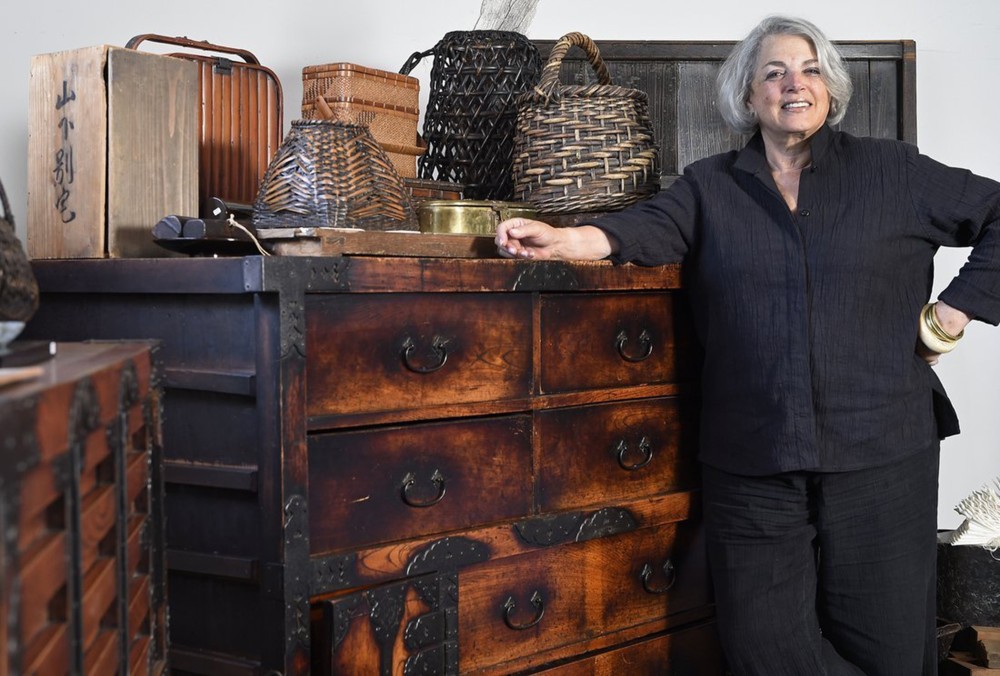By Alice Thorson
The Kansas City Star.
KANSAS CITY
It has been 37 years since Elizabeth Wilson opened Asiatica, a shop known for one-of-a-kind garments made from vintage kimonos and other unusual fabrics, sewn in a large studio on site.
But you can also find elegant housewares and unique gifts, including jewelry, jewelry bags, paper goods and soaps.
Wilson is particularly proud of the shop’s role over the years as an incubator of new talent, as well as its unrivaled archive of antique kimono fabrics.
Question: How did Asiatica start?
A: I have a degree in art history and taught Chinese and Japanese art. After I moved to Kansas City and married Marc Wilson, curator of Asian art at the Nelson-Atkins Museum of Art (who went on to become director for 28 years), I taught at KU and UMKC.
I decided I didn’t want to be an academic and teamed up with a woman in Kansas City and opened a store with functional Japanese and Chinese things. We started buying old kimono and had to figure out: What are we going to do with these beautiful fabrics?
Most Western women don’t look good in a kimono, and I didn’t want to make pillows. My partner, Fifi White, said, “Let’s make clothes.” It started out simply. We made one style of shirt, and it grew from there.
Question: What’s the process?
A: I go to Japan and buy kimono, and when I return we take them apart and recycle them. We have a pattern-maker, and all of our clothes are made from our own designs. This is couture. It’s not “art to wear,” and it’s not costumes. These are clothes for urban people and women who want something unique.
Question: And who buys them?
A: Ninety percent of our business is in other cities. We sell to private clients and do trunk shows all over the country. This season, we have trunk shows in September, October and November.
Question: What’s the Asiatica philosophy?
A: I buy things I like. I like to show something people haven’t seen before.
People tend to associate Asiatica with clothing, but there’s more to the story. I go to Japan every year and look for beautiful things: old kimono, paper goods, ceramics, baskets, antiques.
These little vases are made by a Japanese artist who blows them into wood and it burns the box. We have soap from the finest inn in Kyoto. A box of six cakes, hand-milled, costs $48. We have fabric flowers, made in Kyoto, out of our scrap. We also carry scarves, jewelry and dishes that we buy from Japan.
Question: The dishes are quite affordable.
A: I love dishes. You can buy sweet porcelain bowls for $25 or less, and they’re perfect for blueberries, raspberries and ice cream. We also have Japanese stoneware plates you can put in the dishwasher. They’re $48 a piece.
Question: Tell me about these paper goods. The shapes are so sculptural.
A: They’re from a line called Wasara that includes 13 different shapes of bowls, plates and cups. The cost is $12 for from six to a dozen pieces. We were the first in America to carry them.
Question: But textiles are clearly your first love.
A: We use avant-garde Japanese fabrics, made from polyester and paper, and polyester and metal. We have a line of scarves made from tied-dyed silk. The fabric is twisted and tied, dyed wet and probably heated to keep the texture. We also carry tenugui napkins. Tenugui are the cotton towels that sushi chefs tie around their heads. You can buy a packet of 10 for $35.
Some of these kimonos can stand alone as artworks.
This one we have on display is a type called “boro,” which means rag, and is all the rage at the moment. Boro garments are patched indigo cotton, and people like them for their beaten-up look. The patching and stitching make for a beautiful object.
Question: What’s new?
A: We’re doing a cooperative project with KC CO, the leather accessories company founded by Dominic Scalise. We’ve done a line of bags made from leftover cotton and canvas, and we’ve asked him to do the leather handles.
Question: Tell me about this room with all the bins of rolled fabric.
A: At least once a month I lead a tour for a local college and also high schools. This room is filled with 40 years of scrap, all sorted by color. They should be collected on a database. This is a treasure trove. It’s an incredible archive of 20th-century kimono designs. It makes my heart start beating faster.
___














































































































































































































































































































































































